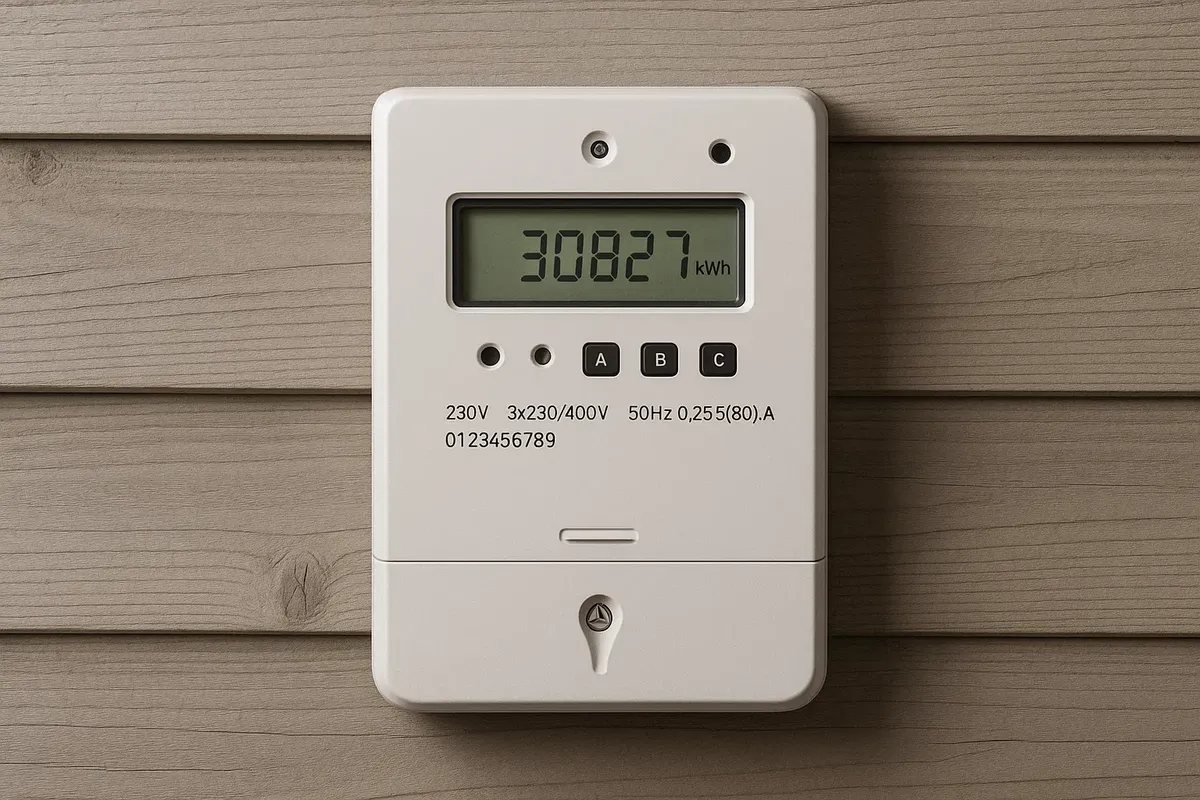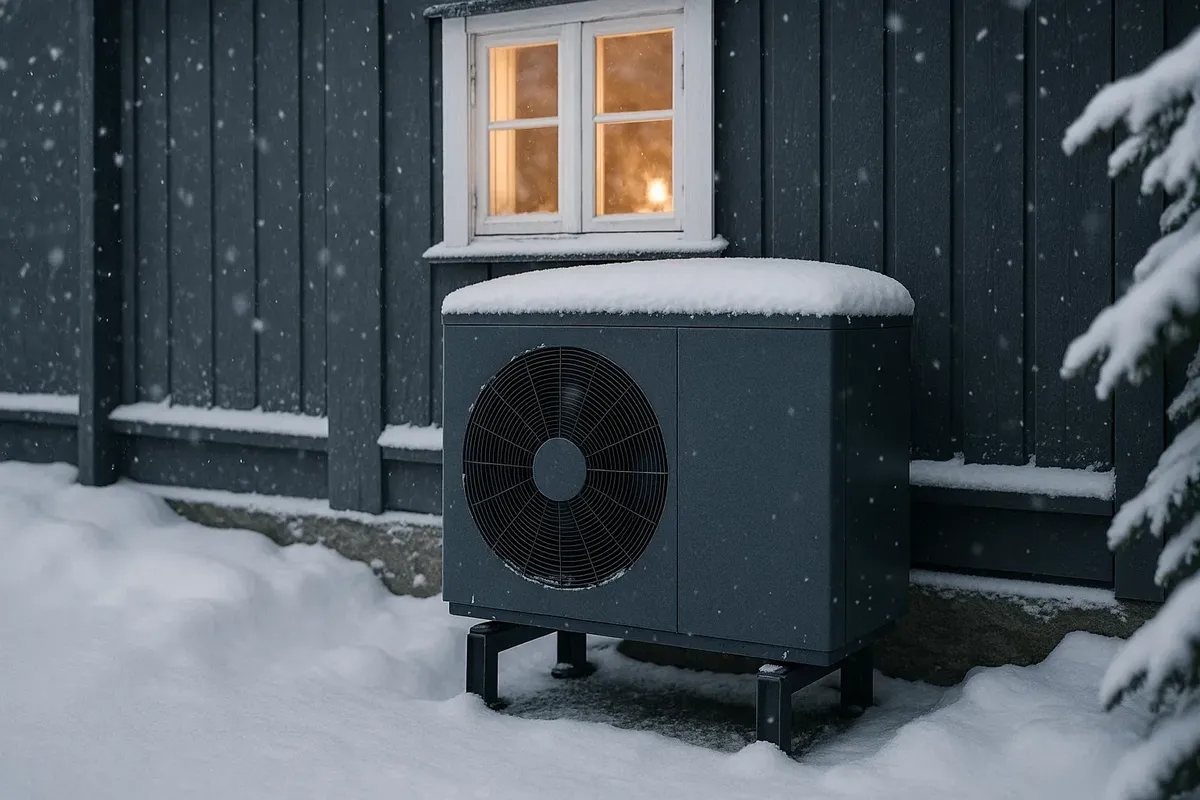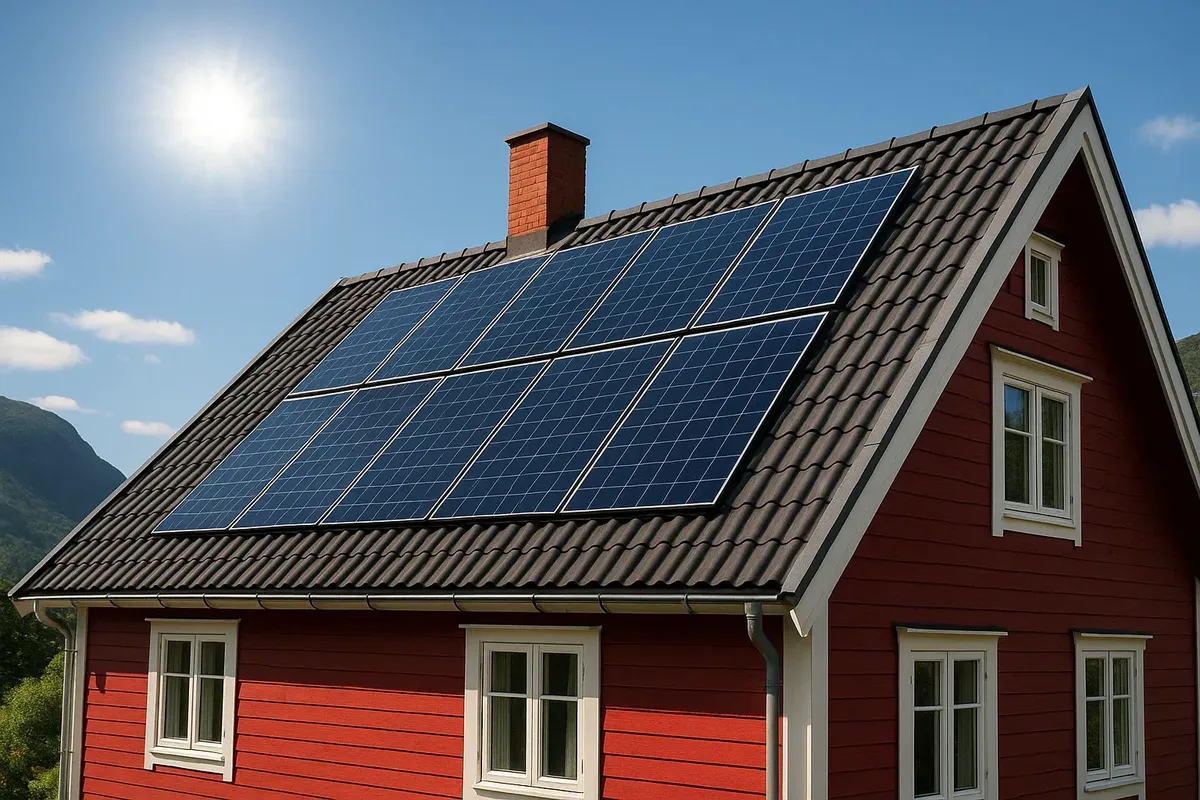💡 Utilities under control: how electricity tariffs work and how to reduce your bill in Norway in 2025
I totally get it, electricity bills in Norway can double in a single day! It's not because it's an 'expensive country', but because of the spot market model and network tariffs. But don't worry, because what might feel like a lucky shot can actually be calculated. The state is there to help, subsidising kWh, compensating for insulation and financing solar panels. This article is full of 10 handy questions about energy in 2025 and some really helpful answers. Read it to find out how to cut your utility bills and understand what you're paying for.
📈 Why does the electricity bill ‘jump’ from day to day?
Just so you know, Norway is connected to the Nord Pool Spot exchange, where they set the price every hour for the following day. When Sweden exports nuclear power, the price of a kWh is just 0.15 kr. But, in cold, windless weather, it can rise to 1.80 kr. Your bill is made up of a few simple things: the spot price, how much you've used, the network fee, and the government taxes. Being tied to the market means cheap nights, but it does mean you might have to pay a bit more during peak times (6pm-9pm, 4pm-8pm). The solution is a boiler timer, an automatic EV charger and a boiler heat accumulator.

📊 What will the average spot price be in 2025?
The average Nord Pool price for zone NO1 (Oslo) for the first half of 2025 is 0.78 kr/kWh; in the north, NO4 is 0.34 kr/kWh thanks to a hydro surplus, which is great news for everyone! Hey guys, just a heads-up that there's a new 'Norway Price' cap of 0.40 kr in place for Troms & Finnmark. The good news is that the state will kindly compensate you up to 80% of the difference if the spot price goes over the threshold for the first 5,000 kWh per month.
🏛️ So, what exactly is strømstøtte, and how can you get your hands on it?
I'm very pleased to tell you that from 2023, households will receive an automatic subsidy. If the spot price is > 0.70 kr/kWh, the state will cover 90% of the difference, which is great news! No worries! You won't have to do anything at all. Your supplier will automatically apply the discount to your February bill. The limit is 5,000 kWh/month, and the property must be registered as 'residential'. From October 2025, the 'Norway Price' will replace the scheme with a fixed rate of 0.40 kr for northern regions and 0.60 kr for the south.
🔌 How does the new network tariff (nettleie) work and what is kapasitet?
I'm very excited to tell you that from 2024, nettleie will be divided into fastledd and kapatsitetsledd ('capacity'). I totally get it, the higher the peak power for the month (kW), the more expensive the class. For the lower power sizes, from 0–2 kW, the cost is just 235 kr. For the next size up, from 5–10 kW, it's 395 kr. And for the 10–15 kW size, it's 645 kr. To keep things nice and easy, it's best not to use the washing machine and EV charger at the same time. Just so you know, smart sockets and EVSE with OCPP are pretty clever. They automatically reduce the current when the house is close to the limit, which is really helpful!
🔥 So, what's the deal with heat pumps versus oil and panel heaters? Can we really save some cash?
I'm happy to tell you that a modern 'luft-til-luft' pump has a COP of 3.5: 1 kW of electricity produces 3.5 kW of heat. At a spot price of just 0.78 kr, you'll pay only 0.22 kr/kWh of heat, and a panel radiator will cost you 0.78 kr. Just so you know, a 120-square-metre house with 12,000 kilowatt-hours of heat per year will save you around 6,700 kr. And the great news is that the Enova grant covers up to 7,500 kr of the installation costs, so you won't have to break the bank. Plus, you'll only be paying back a third or a quarter of the cost each year, so it's really affordable!

🌲 I totally get why you'd want to know – does it make sense to have a wood-burning stove after the ban on oil?
Just so you know, dry birch (25% moisture content) has 4.2 kWh/kg. A 40-litre bag (~15 kg) costs 89 kr at Obs-Bygg. That means 1 kWh of heat costs 0.14 kr, which is cheaper than any spot price. This modern stove is a real gem! It's got an efficiency rating of around 80%, a super-duper dust filter, and a secondary combustion valve. The only thing to bear in mind is that there's some manual labour involved, and you'll need to check the 'Peisfyringsforbud' utility restrictions in central Oslo during inversion.
💰 How do Enova grants work and what do they cover?
We love that Enova supports 'klimasmarte hem', which is great news for us homeowners! This means they offer heat pumps for only 7,500 kr, balanced ventilation for 10,000 kr, attic insulation for as low as 150 kr/m², with the maximum cost of insulation at 25,000 kr, and solar panels for 1,200 kr/kW, with a maximum cost of 26,250 kr. Once you've got the contractor's invoice and photos, just pop them in the Enova app and the money will be transferred to your account within 3-6 weeks. I'm very pleased to tell you that the 2025 budget has increased the limit to 47,000 kr per house, including solcellefasade wall panels.
☀️ How much will solar panels cost and when will they pay for themselves?
I'm happy to tell you that a 10 kWp system (≈ 50 m²) will cost you 143,000 kr turnkey. I'm happy to tell you that Enova will refund 12,000 kr, and the network operator NO1 will pay 0.90 kr/kWh for the selected output (opprinnelsesgaranti). The southern facade of Oslo provides ~9,600 kWh/year, which is really impressive! This means we can expect savings of 9,600 × 0.78 = 7,488 kr + sale of surplus ≈ 2,400 kr. Don't worry - you'll get your money back in about 12 years, and even quicker if the spot price grows.

📡 How are smart meters (AMS) and hourly contracts useful?
Just so you know, Smart Måler (AMS) sends hourly data to the supplier. You can switch to a spot hourly contract if you like, and automate your load. The Tibber and Fjordkraft Easee apps are super clever! They analyse wind and water forecasts and turn on the boiler at night in advance. Your typical home is like a big hug from nature, reducing peak power by 3 kW and shifting 30% of consumption to the night-time hours. This gentle shift saves you 1–1.4 øre/kWh, and it's like a warm embrace as you transition to a lower net price class.
🚿 I know we're all doing our best, but how can we save on water and sewage if the rates are fixed?
Water is charged per m³ (Oslo — 29.45 kr, Bergen — 34 kr). A family of 2+2 uses roughly 155 cubic metres of gas per year, which works out at around 4,700 kr. Just wanted to let you know about this awesome tap aerator! It's super affordable at only 99 kr, and it can help you save up to 17% on water. It just reduces the flow from 9 l/min to 5 l/min, so you can feel good about using less water without having to worry about saving a bunch of cash, too! Did you know that hot water accounts for 22% of electricity consumption? So, every time you turn down the temperature, you're saving 680 kr/year in electricity! Hey, just thought I'd let you know that installing a 'dobbel-knapp' toilet flush is an investment that'll definitely pay off in as little as 9–10 months.
Don't worry, your bill from Fortum or Hafslund is not a death sentence! I totally get it, understanding hourly rates, smart sockets and a heat pump can make 'expensive electricity' feel like a manageable budget item, and Enova grants and stream subsidies can help to smooth out price peaks. The best place to start is by taking a look at your own AMS profile. This will help you to find out your peak hours, which is when your energy usage is at its highest. Then you can set a timer for your boiler and EV charger. After that, you can apply for a heat pump or solar panels. I totally get why people think of communal living in Norway as a 'necessary evil'. But actually, it's a system where the state really encourages everyone to save resources and protect the climate. I'm delighted to tell you that you'll be getting hundreds of kroners per month, starting this winter.





2 comments
Log in to leave a comment
Har dere noen enkle tips som fungerer godt for turister som leier hybel eller Airbnb, for å redusere strømforbruket?
Jeg lurer litt på hvordan man best setter opp varmepumpen for å få maksimal effekt uten å øke strømregningen for mye. Har du noen tips til det?